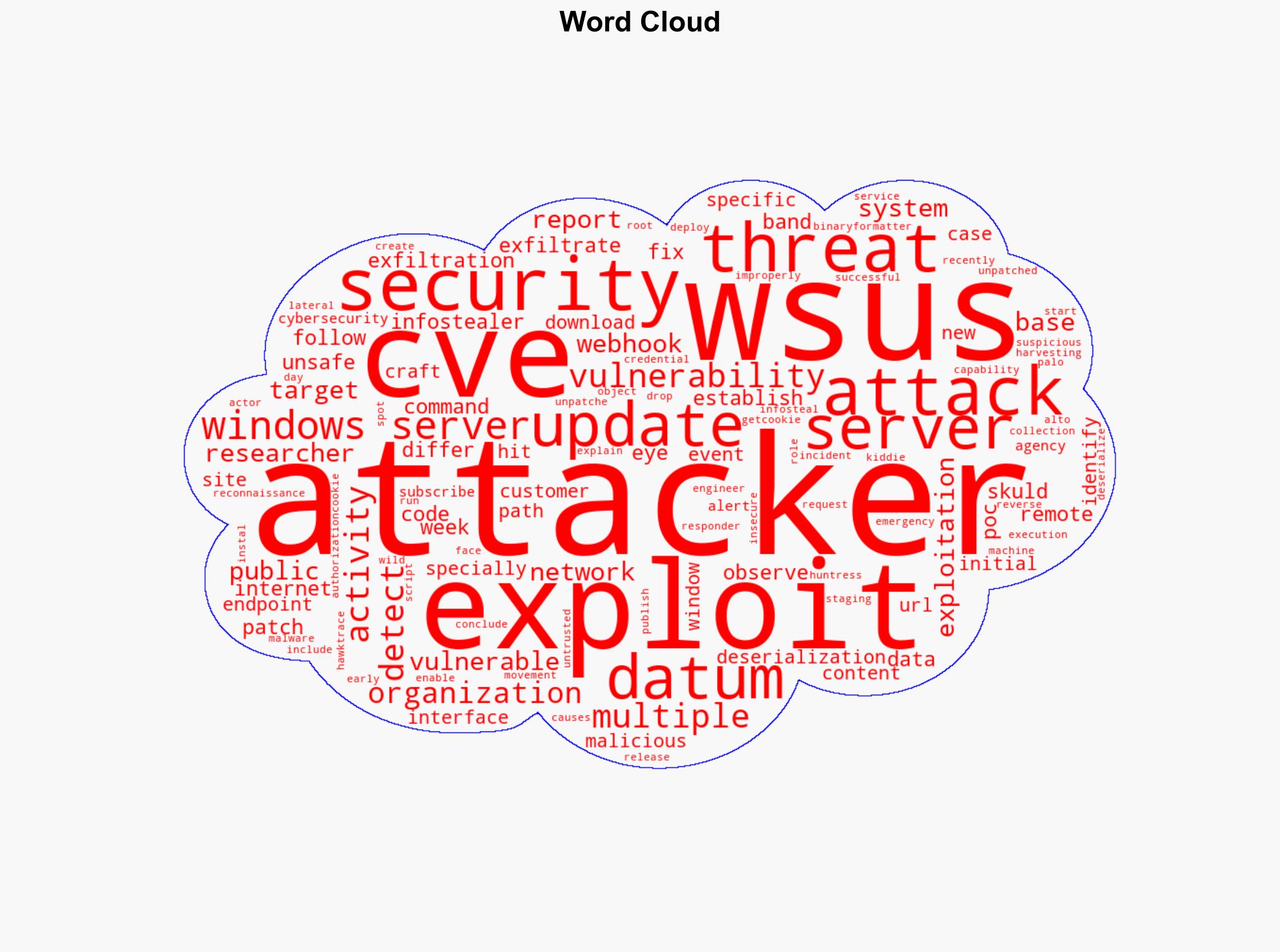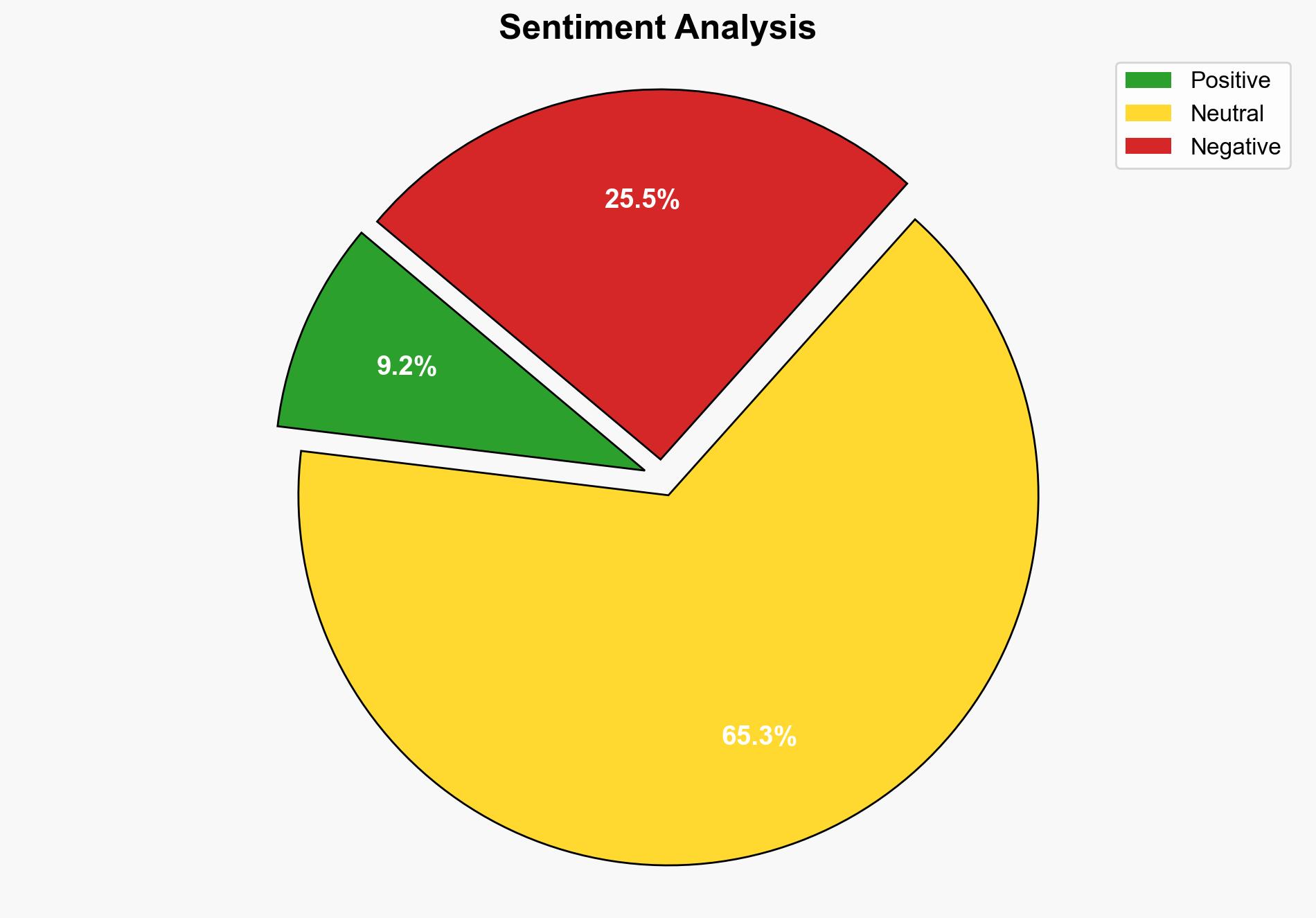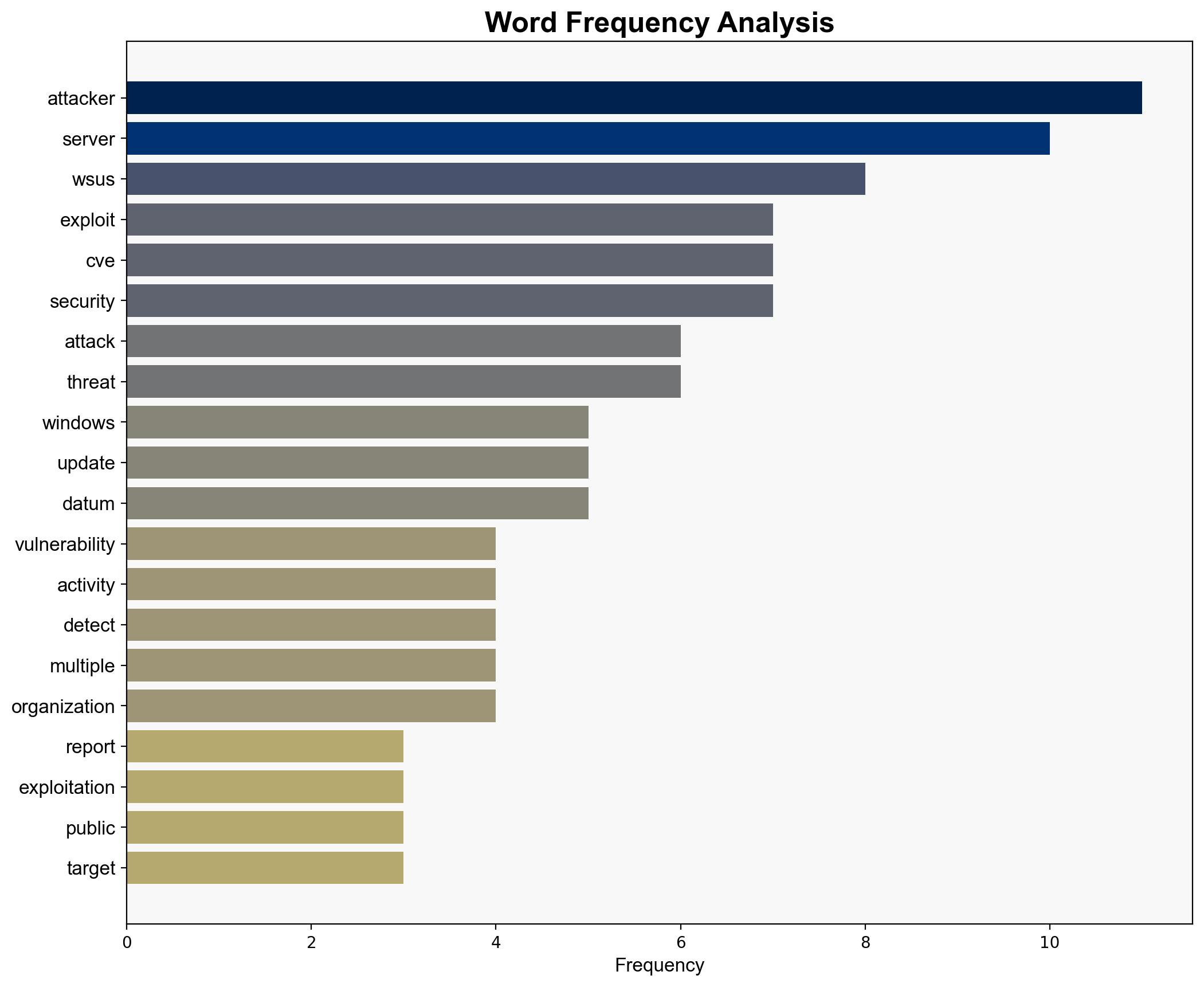Attackers exploiting WSUS vulnerability drop Skuld infostealer CVE-2025-59287 – Help Net Security
Published on: 2025-10-30
Intelligence Report: Attackers exploiting WSUS vulnerability drop Skuld infostealer CVE-2025-59287 – Help Net Security
1. BLUF (Bottom Line Up Front)
The exploitation of the WSUS vulnerability CVE-2025-59287 by attackers to deploy the Skuld infostealer poses a significant threat to unpatched Windows Server environments. The most supported hypothesis suggests that sophisticated threat actors are leveraging this vulnerability for targeted data exfiltration and potential ransomware deployment. Immediate patching and enhanced monitoring are recommended. Confidence Level: High.
2. Competing Hypotheses
Hypothesis 1: Sophisticated threat actors are exploiting the WSUS vulnerability to conduct targeted attacks for data exfiltration and potential ransomware deployment. This is supported by the observed network reconnaissance, data collection, and the use of advanced tools like Velociraptor for command and control.
Hypothesis 2: Opportunistic attackers, possibly script kiddies, are exploiting the vulnerability indiscriminately across vulnerable systems, primarily for financial gain through data theft and resale. This is suggested by the variety of targets and the use of publicly available PoC exploits.
Using Analysis of Competing Hypotheses (ACH), Hypothesis 1 is better supported due to the observed sophistication in attack methods and the specific targeting of high-value sectors such as technology and healthcare.
3. Key Assumptions and Red Flags
– Assumptions for Hypothesis 1 include the presence of organized threat groups with the capability to exploit such vulnerabilities and the intention to deploy ransomware.
– Assumptions for Hypothesis 2 include the availability and use of PoC exploits by less skilled attackers.
– Red flags include the rapid exploitation post-patch release, indicating potential insider knowledge or rapid reverse engineering capabilities.
– Missing data on the exact origin of the attacks and the full scope of affected entities.
4. Implications and Strategic Risks
The exploitation of this vulnerability could lead to significant data breaches, financial losses, and reputational damage for affected organizations. There is a risk of cascading effects if ransomware is deployed, potentially disrupting critical infrastructure. Geopolitically, this could strain relations if state-sponsored actors are involved. The psychological impact on organizations could lead to increased cybersecurity investments and policy changes.
5. Recommendations and Outlook
- Immediate application of the emergency patch for CVE-2025-59287 across all vulnerable systems.
- Enhanced monitoring of network traffic for signs of reconnaissance and data exfiltration.
- Conduct regular security audits and penetration testing to identify and mitigate vulnerabilities.
- Best Case: Rapid patching and monitoring prevent further exploitation, minimizing impact.
- Worst Case: Delayed response leads to widespread ransomware attacks and data breaches.
- Most Likely: Targeted attacks continue until patching is widespread, with some successful data exfiltration incidents.
6. Key Individuals and Entities
– Piet Kerkhof (Eye Security CTO)
– Palo Alto Networks researchers
– Darktrace threat research team
– Sophos threat researchers
7. Thematic Tags
national security threats, cybersecurity, counter-terrorism, regional focus




